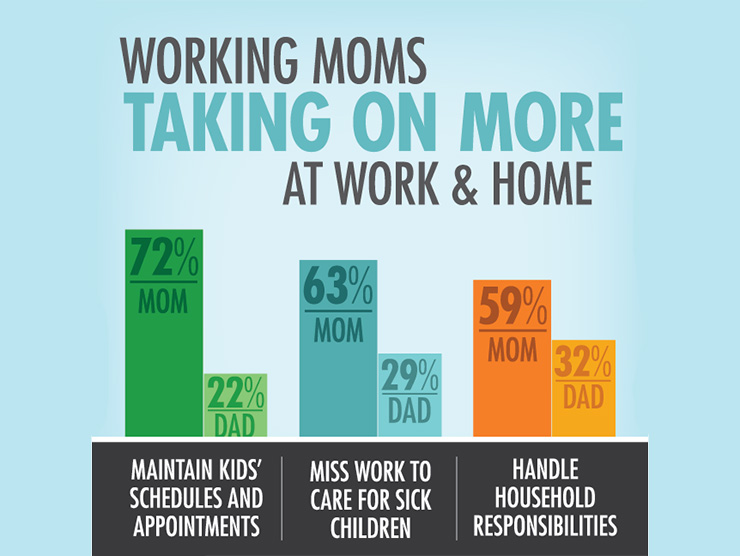"Lighten the Mental Load" Webinar Offers Employers Strategies to Support Working Parents

February 16, 2018 – In partnership with Employee Benefit News, Bright Horizons Family Solutions Vice President of Strategic Initiatives Michelle Kang and Vice President of Workforce Consulting Jennifer Vera recently co-led a webinar for more than 75 participants representing a range of industries that reviewed new findings on the true, measurable impact of “mental load” for employees and explored strategies that employers can use to help ease the mental load.
Both working mothers with three children, Kang and Vena can relate to the challenges faced by women in the workplace despite the tremendous strides made over the past 40 years. According to the latest U.S. Bureau of Labor statistics:
- Women hold nearly 52% of management and professional roles;
- 1 in 3 lawyers are women compared to 1 in 10 in 1974;
- 70% of all mothers with children under 18 are in the workforce.
“While women are pushing to advance their careers, they are also still the leaders of the household – a role that doesn’t come with vacation time and quarterly bonuses,” Kang said. “It’s a role where women are usually responsible for the majority of tasks around the family and home. And this isn’t to say that men aren’t taking on tasks and duties around the house – they are. But most of the time, when the unexpected occurs, like a child getting sick, the majority of the time it is the woman who is expected to balance both caring for a sick child and whatever is on her plate at work.”
The 2017 Modern Family Index, commissioned by Bright Horizons to survey more than 2,000 working parents, found that even though 90% of employed parents feel that the primary breadwinner of a household can be either the mother or the father, the female breadwinner still shoulders the majority of traditional household tasks of a non-breadwinner.
“Productivity suffers when employees are stressed,” Vena said. “So when the mind is trying to resolve all of these tasks, it not only increases stress but leads to a wandering, less focused mind. Employees who feel burnt out or feel that they can’t balance life commitments without fear of feeling judged or left behind in their careers can lead to increases in absenteeism.”
Often, work-life balance comes at a cost. Eighty-nine percent of MFI survey respondents said they would be willing to give up some form of traditional benefit in order to spend more time with their family. But instead of taking away or trading benefits, can employers do a better job of supporting their employees as people with lives outside of work?
According to Kang, the answer is yes: “Employers can create a culture of support and trust, where employees can bring their whole selves to work,” she said. “For example, 55 percent of employed parents said they snuck out of work because they couldn’t be upfront with their colleagues, specifically for family emergencies and even picking their kids up for school. A culture that maintains that level of distrust is one that is set up to burn out and eventually lose skilled, passionate, career-focused working parents.”
From mentoring programs for new parents to seek advice from colleagues who have raised children while successfully growing their careers, to providing child care benefits and return-to-work programs for all working parents, employers – and especially individual managers – have an opportunity to ease the mental load their employees bear. And perhaps this will encourage mothers and fathers to find more balance in how they share responsibilities at home, too.
